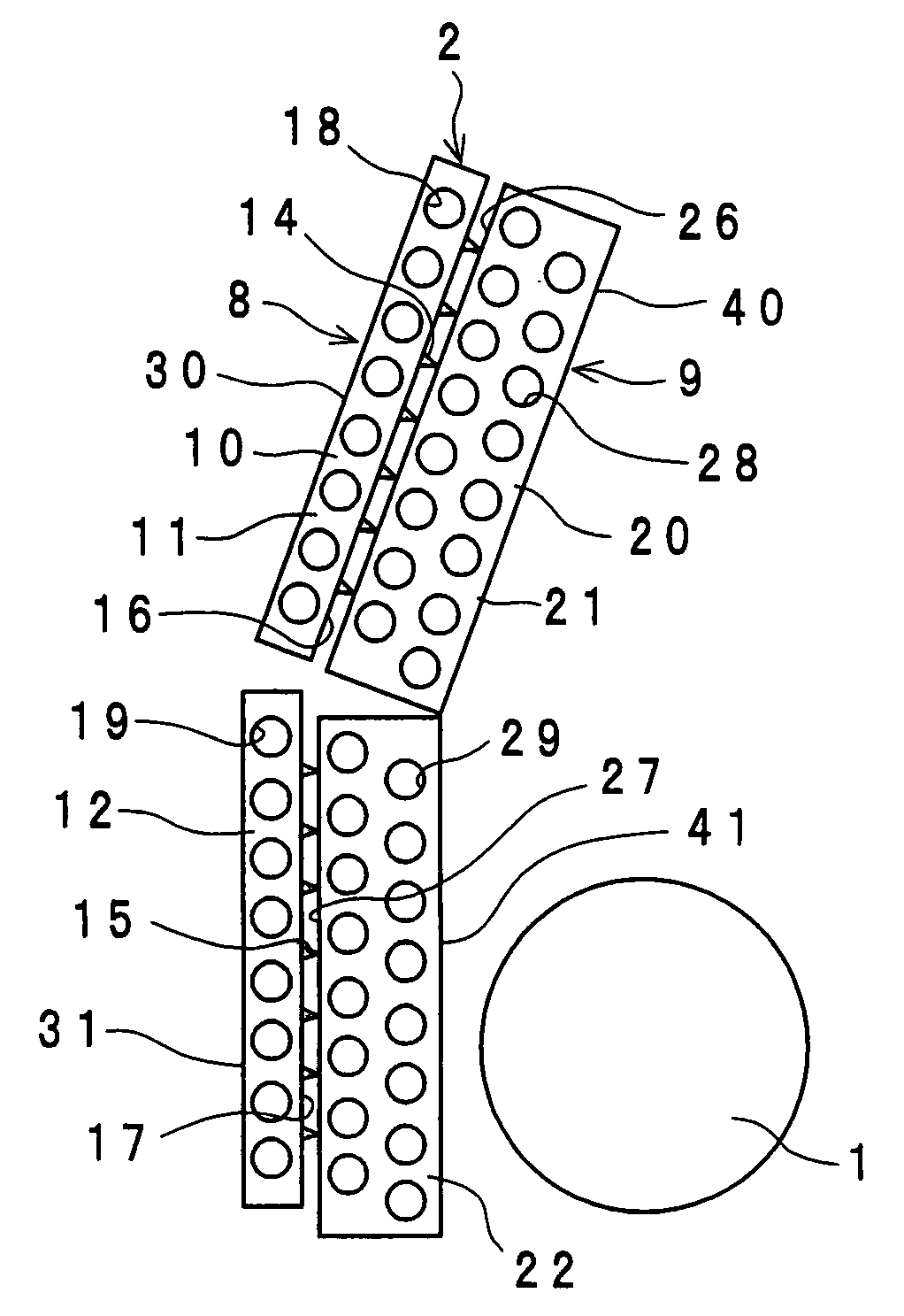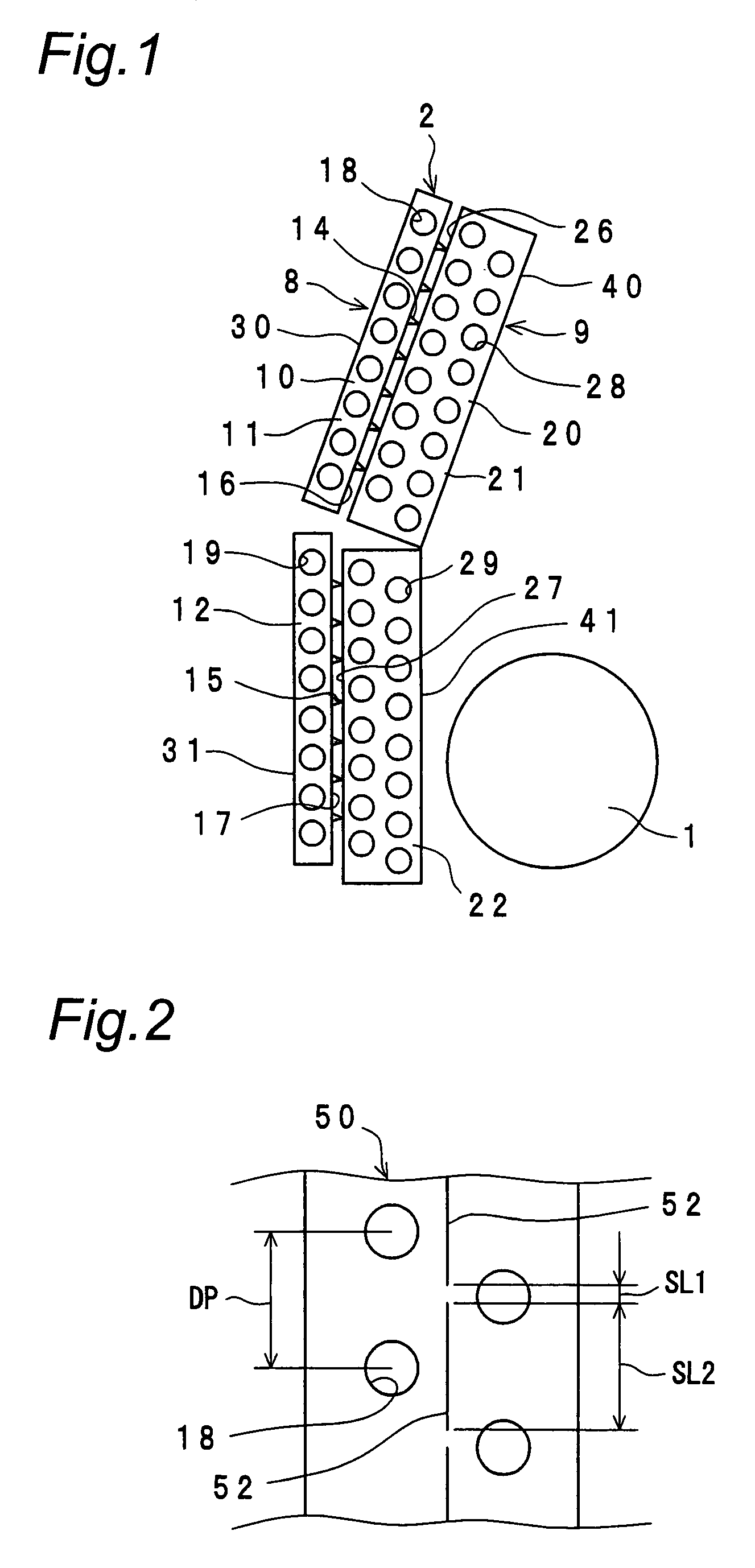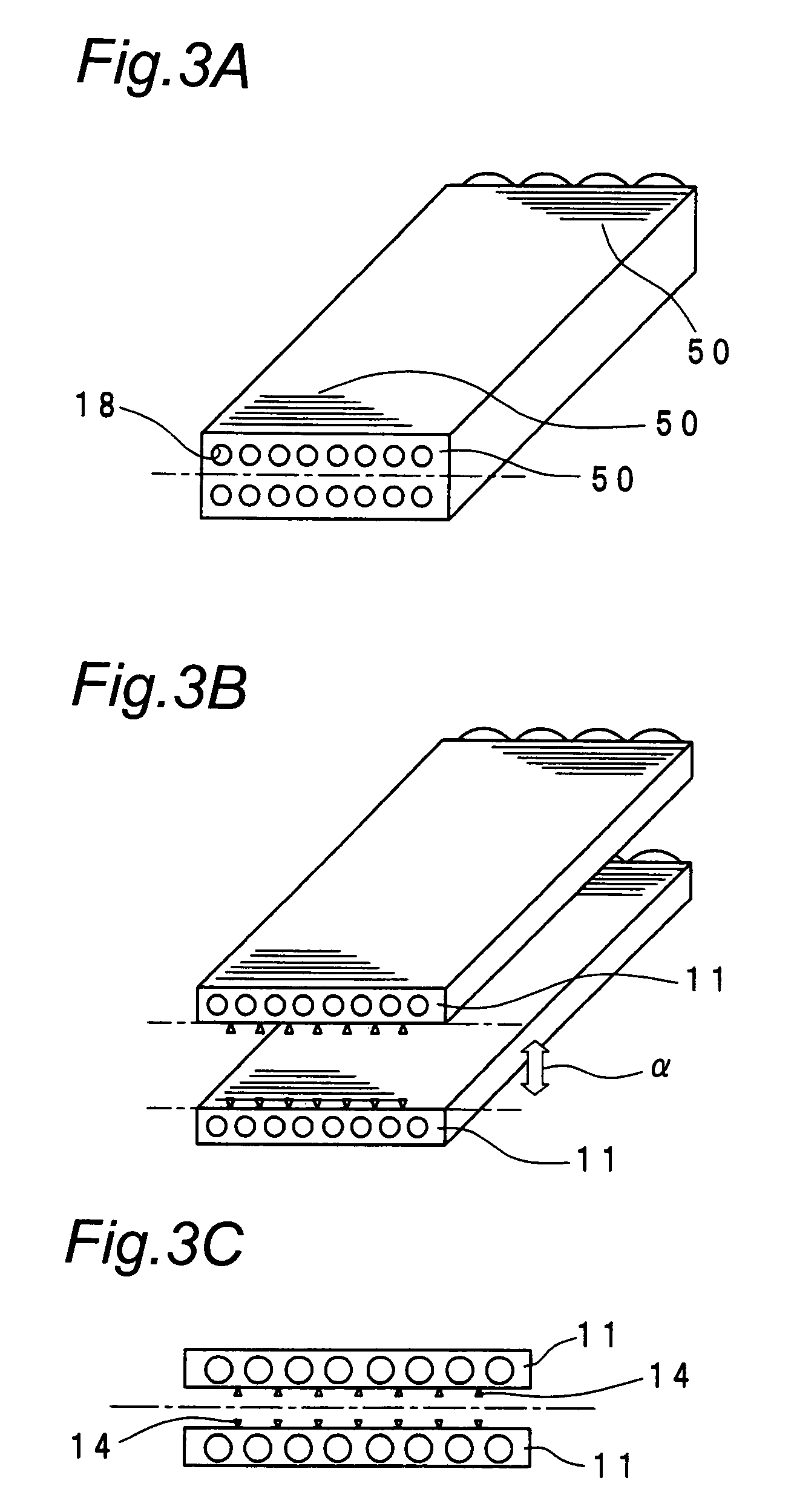Heat exchanger
a technology of heat exchanger and heat exchanger body, which is applied in the direction of indirect heat exchangers, heating types, lighting and heating apparatus, etc., can solve the problems of serious problems, impaired appearance of heat exchanger, and condensed water, so as to keep the heat exchanger from impairment of its appearance
- Summary
- Abstract
- Description
- Claims
- Application Information
AI Technical Summary
Benefits of technology
Problems solved by technology
Method used
Image
Examples
Embodiment Construction
[0024]Hereinbelow, the present invention will be described in detail by embodiments thereof illustrated in the accompanying drawings.
[0025]FIG. 1 is a schematic sectional view of an air conditioner which uses a heat exchanger according to one embodiment of the invention. In FIG. 1, reference numeral 1 denotes a blower fan, and 2 denotes a heat exchanger. In FIG. 1, a casing or the like in which the blower fan 1 and the heat exchanger 2 are housed is omitted for simplicity's sake.
[0026]This air conditioner is so designed that the blower fan 1 is rotated to blow out air, which serves as a heat transfer medium sucked in via the heat exchanger 2, through an unshown blowoff opening.
[0027]The heat exchanger 2 has an auxiliary heat exchanger 8 as an example of a first heat exchanger section, and a main heat exchanger 9 as an example of a second heat exchanger section.
[0028]The auxiliary heat exchanger 8 has sheet-like first fins 10, and unshown first heat transfer tubes. The first fin 10, ...
PUM
 Login to View More
Login to View More Abstract
Description
Claims
Application Information
 Login to View More
Login to View More - R&D
- Intellectual Property
- Life Sciences
- Materials
- Tech Scout
- Unparalleled Data Quality
- Higher Quality Content
- 60% Fewer Hallucinations
Browse by: Latest US Patents, China's latest patents, Technical Efficacy Thesaurus, Application Domain, Technology Topic, Popular Technical Reports.
© 2025 PatSnap. All rights reserved.Legal|Privacy policy|Modern Slavery Act Transparency Statement|Sitemap|About US| Contact US: help@patsnap.com



